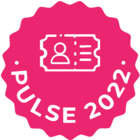Hi all, I'm very new to Gainsight so guess I'm looking for pointers to good resources to learn more about the practical side of seting up the various elements of gainsight. The organisation I'm joining is new to the CSM role but is investing heavely in the process. I've turned up and have done various Gainsight courses to become familiar with the concepts and screens then I've logged into our Salesforce/Gainsight platform to find very little there.....
Can anyone point me to any resources where I can get better ideas about how best to approach getting gainsight implemented in a efficient manner. For example is it better to get our house in order with Salesforce first (i.e ensure data such as account managers, oppertunties, contacts etc are up to date). After I get to a certain level I can hopefully ask more sensible specific questions of the community.
Sorry if this has been asked a lot. Currently on a steep learning curve 🙂 I know what I want to do and what it takes to keep a customer happy, just figuring out how best to make gainsight a fantastic resource rather than a burden
Thanks
Question
New to Gainsight (SF) after advice on where to find
Sign up
If you ever had a profile with us, there's no need to create another one.
Don't worry if your email address has since changed, or you can't remember your login, just let us know at community@gainsight.com and we'll help you get started from where you left.
Else, please continue with the registration below.
Welcome to the Gainsight Community
Enter your E-mail address. We'll send you an e-mail with instructions to reset your password.


